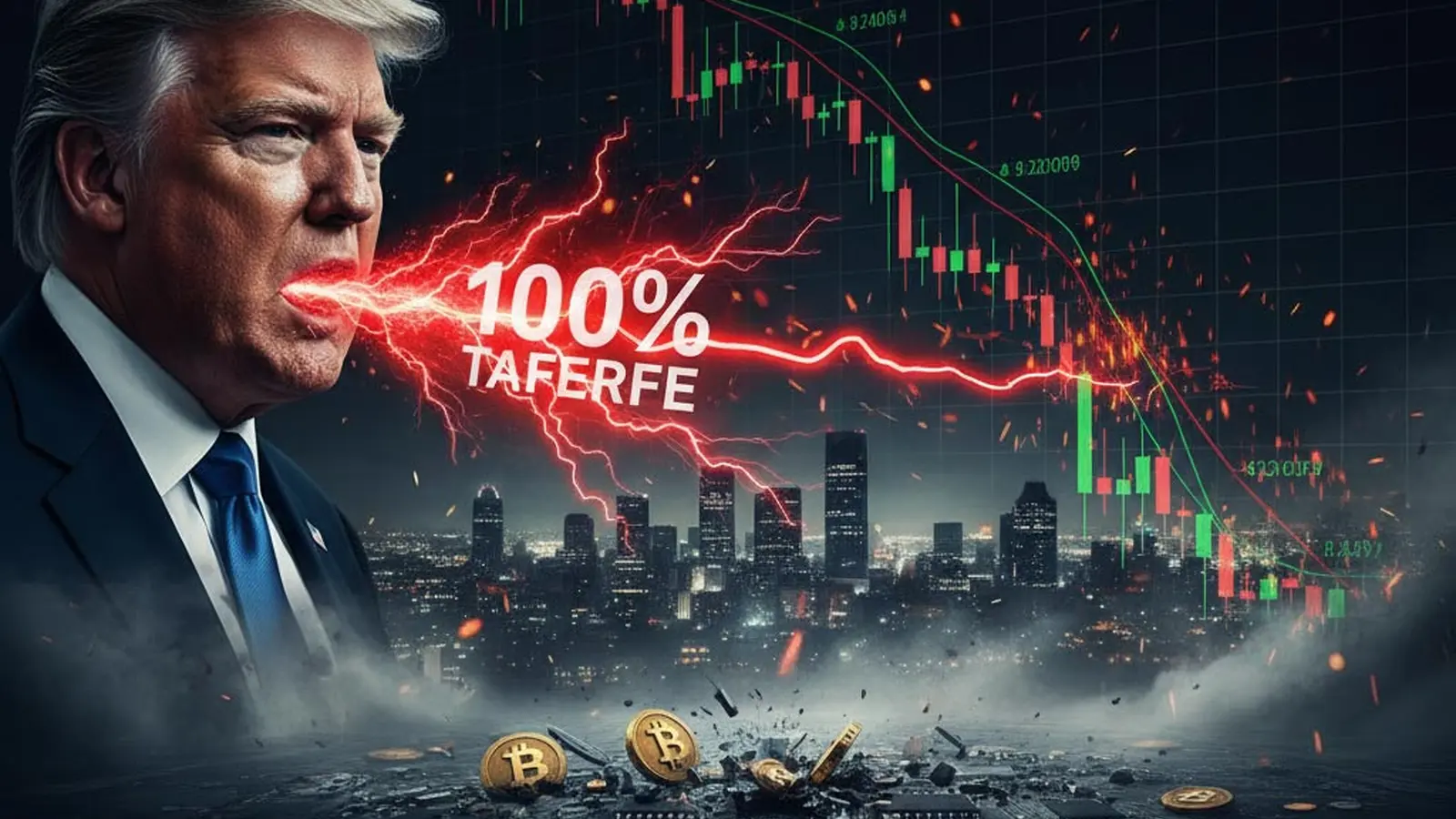5 Minutes
Massive Bitcoin Drop After Trump Announces 100% Tariff on China
Donald Trump’s announcement of a 100% import tariff on Chinese goods sent immediate shockwaves through cryptocurrency markets on Friday. The tariff declaration, framed as a response to potential Chinese export controls on rare earth elements used in semiconductor manufacturing, triggered a sharp sell-off that pushed Bitcoin well below $110,000 and toward an intraday low near $102,000 — a three-month low not seen since late June.
Immediate market reaction and futures volatility
Within minutes of the announcement, BTC/USDT futures on Binance tumbled to roughly $102,000, while spot markets such as Coinbase recorded a daily low around $107,000. Derivatives data provider CoinGlass reported more than $19 billion in liquidations across the crypto markets within a 24-hour window, with approximately $16 billion of that figure coming from leveraged long positions. That scale of liquidation is comparable to previous major crashes and highlights the acute liquidity stress in both spot and derivatives markets.
Leverage, forced selling and altcoin carnage
Analysts at HiBlog Capital (translated from the original Persian reporting) noted that two-times leverage on many altcoins was effectively wiped out, reflecting a forced deleveraging wave that amplified selling pressure. The cascade affected major altcoins: Ether (ETH) retraced toward $3,500 on Coinbase, and Solana (SOL) futures dipped below $140 on Binance. Large-cap altcoins experienced steep corrections as traders rushed to cover margin calls and unwind leveraged positions.
Market cap and sentiment metrics
The total crypto market capitalization fell to about $3.64 trillion, marking an 11.8% decline in 24 hours. The speed and breadth of the move underscore how sensitive digital-asset markets remain to macro and geopolitical headlines. Sentiment metrics swung sharply negative as traders reassessed risk profiles amid the prospect of a wider trade conflict between the U.S. and China.

Why rare earths and chip supply matter for crypto
The tariff announcement targeted rare earth elements — critical inputs for semiconductor fabrication. China is a dominant supplier of these materials, and any export restrictions can ripple through global supply chains for chips used across industries, including infrastructure that underpins cryptocurrency mining and data-center operations. Semiconductors are essential for mining rigs, ASICs, GPUs and other hardware that support blockchain networks and node operations. Disruptions to chip supply therefore translate into longer-term operational risks for miners and hardware manufacturers.
Broader geopolitical context
In recent years the U.S. has tightened export controls on advanced technologies to China and curtailed certain foreign investments. This tariff move risks escalating trade tensions and could prompt reciprocal measures from Beijing. If China enacts countermeasures, global technology supply chains — and by extension crypto mining operations and hardware producers — could face higher costs, slower deliveries and operational bottlenecks that feed back into market pricing and investor sentiment.
Outlook: potential scenarios and what traders should watch
Traders and investors now face a bifurcated outlook. In a downside scenario, persistent trade escalation or retaliatory restrictions from China could sustain selling pressure and force Bitcoin and major altcoins to test lower support levels. Highly leveraged traders remain the most vulnerable; continued headline risk could trigger additional liquidations and volatility.
Conversely, some analysts argue the market may stabilize after the initial shock is absorbed. If macroeconomic indicators and central bank policy responses provide clarity, and if supply-chain disruptions are contained or mitigated, crypto markets could transition from a panic phase to consolidation. A period of consolidation often follows large headline-driven moves, with subsequent price direction determined by fundamentals, on-chain data and macro policy trajectories.
Key indicators to monitor
- Derivatives metrics: futures funding rates, open interest and liquidation volumes on Binance, Huobi and other venues.
- On-chain flows: exchanges inflows/outflows for BTC and ETH, miner behavior, and large wallet movement.
- Macro developments: official statements from the U.S. and China, trade policy updates, and semiconductor export rules.
- Hardware availability: shipment updates from ASIC/GPU producers and inventory reports from major suppliers.
Conclusion: geopolitics remains a major crypto price driver
The 100% tariff announcement is a stark reminder that geopolitical decisions can rapidly reshape risk perceptions across crypto markets. The plunge of Bitcoin to roughly $102,000, multi-billion-dollar liquidations, and broad-based declines in ETH and SOL illustrate how macro and trade policy events now intersect with digital-asset markets. Market participants should prepare for continued volatility, pay close attention to futures and spot liquidity, and reassess leverage exposure as geopolitical developments unfold.
Whether the market will retest lower supports or find a path to stabilization depends on the duration and severity of trade escalation, countermeasures from China, and broader macro policy. For now, traders must weigh both short-term technical levels and longer-term supply-chain implications when managing crypto exposure.


Leave a Comment